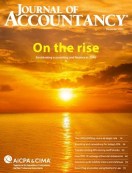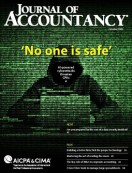- newsletter
- PFP Digest

How OBBBA alters charitable deduction strategies for 2025 and 2026
Donating to charity this year may have a greater tax benefit for itemizers than doing so next year.
Related
Why 2026 is another ‘big tax year’
IRS clarifies health savings account changes in H.R. 1 in new notice
PTEs need more notice of changes, more time to respond, AICPA says
Some new rules concerning the deductibility of charitable contributions were enacted as part of H.R. 1, P.L. 119-21, commonly known as the One Big Beautiful Bill Act. The changes introduce incentives and limitations that may influence decisions about the timing and amounts of donations. Financial advisers can help clients plan how they will manage their charitable giving in 2025 and beyond.
“Most of the changes for individual taxpayers decrease the tax benefit of charitable contributions, especially for those with higher income who itemize,” said Robert Westley, CPA/PFS, CFP, a regional wealth adviser with Northern Trust in New York City. “The most practical and actionable items relate to timing of contributions in 2025 versus later years, if the taxpayer has the intent and means to act this year.”
As discussed below, H.R. 1 affects charitable deductions and the timing of donations in various ways.
Charitable deduction for nonitemizers
Before discussing new limitations for itemizers, a significant new deduction for nonitemizers should be noted. Starting Jan. 1, 2026, individuals who do not itemize deductions can deduct up to $1,000 ($2,000 for married taxpayers filing jointly) of cash contributions annually to qualified charities.
“This is a universal deduction, reducing taxable income, that makes charitable donations more accessible and appealing to more taxpayers who could not get a tax benefit for charitable giving before,” said Wesley Botto, CPA/PFS, CFP, financial planner at Hillcrest Financial Group in Cincinnati. This change will benefit lower- and middle-income taxpayers the most. “I think this one is really interesting, so I am telling clients to keep track of their smaller donations during the course of the year so they can get credit for this going forward,” he said.
Floor for charitable deductions by itemizers
Turning now to the limitations on deductibility that were included in H.R. 1, individual taxpayers who itemize deductions will be subject to an annual floor of 0.5% of their contribution base (generally, their adjusted gross income (AGI)), effective starting Jan. 1, 2026. The floor resembles the limitation of 7.5% of AGI for medical expense deductions. Prior to H.R. 1, there was no floor.
“This reduces the impact of itemized charitable deductions,” Botto said. “For someone close to the floor, it could mean they are not able to itemize charitable contributions at all.”
In addition, the overall 60%-of-AGI cap on itemized deductions for cash contributions to public charities and certain private foundations established by the Tax Cuts and Jobs Act (TCJA), P.L. 115-97, was made permanent. It had been set to expire Dec. 31, 2025, and revert to 50%.
“While the 0.5% floor is across the board for all itemizing taxpayers, it impacts high earners the most,” Botto said. For planning purposes, it may be more beneficial for taxpayers who itemize to make contributions in 2025 when there is no floor in place, especially if a large donation is considered. Also, it may be beneficial for them to consider making contributions in a year when AGI is lower, so that the floor amount is lower, he noted.
Ceiling on itemized deductions for high-income taxpayers
Under H.R. 1, starting Jan. 1, 2026, a new rule goes into effect for taxpayers in the highest marginal federal bracket of 37%. Under the rule, the benefit of their itemized deductions is capped at 35%. This ceiling applies to all itemized deductions, not simply charitable ones. For 2025, the 37% bracket starts at taxable income amounts of $626,351 for single filers and $751,601 for joint filers.
“The amount of the deduction disallowed will be calculated as 2/37 times the lesser of (a) total itemized deductions, or (b) the amount of income taxed at the highest marginal rate,” Westley said.
He shared this example: “In 2025, a taxpayer with AGI of $1 million and $100,000 of charitable contributions in the 37% marginal tax bracket would have a $37,000 federal tax benefit. In 2026, the taxpayer will get a benefit of $33,250 ($1 million of AGI is subject to a 0.5% nondeductible floor, so the maximum charitable deduction is $95,000, and the deduction is calculated at the 35% tax rate). In this example, OBBBA changes result in an approximately 10% reduction in tax benefit for the same level of contributions.”
As illustrated, taxpayers in the top tax bracket may have a decrease in deductions for charitable contributions beginning in 2026. This change may affect when and how they decide to contribute; they may choose to accelerate their contributions into 2025 to get a higher tax benefit.
“This is an area where planning now in the remainder of 2025 makes a lot of sense,” Botto said. “Taxpayers in the highest tax bracket with significant itemized deductions should do everything they can to drop their taxable income below the amounts for the 37% bracket so the new limitation on itemized deductions does not apply.”
Planning strategies
Advisers can share several planning opportunities with clients to reduce the potential negative effects of H.R. 1 on charitable deductions.
Donor-advised funds (DAFs). These provide a way to contribute cash, stock, or other assets to get an immediate tax benefit in the year of funding. The funds contributed are invested and can grow tax-free. The donor can choose how they are invested and when the money goes to charities, immediately or over time.
“DAFs are becoming more accessible, with low minimums, and they provide a flexible investment option that can grow over time,” Westley said. “They allow the donor to control and separate the timing of the tax deduction as opposed to the cash flow to charities.” Westley noted that funding a DAF in 2025 could be a way to pull the charitable donation deduction into 2025, although the contributions may occur in 2026 and beyond, and to address the floor that will take effect in 2026.
Botto agrees. “They are most relevant for high-dollar donations and can be useful in the case of a one-time windfall or taxable event, like a bonus or inheritance or sale of a business,” he said. “A taxpayer could make a big contribution to a DAF to smooth income and get a tax deduction at that time; in subsequent years, donations would be made from the DAF. In the case of appreciated stock, the taxpayer gets a deduction for the fair market value of the stock and does not pay capital gains tax, and the charity does not have to pay taxes on the donation or future appreciation of the stock.”
Charitable bunching. This is a plan to make several years of donations in a single tax year. “Bunching contributions became popular when the standard deduction doubled under the TCJA and fewer people were itemizing and able to get a benefit from charitable donations,” Westley said. “Bunching is a way to front-load charitable donations into 2025 to maximize the tax benefit and avoid the floor and ceiling in 2026 and beyond.”
“Taxpayers with modest income, not in the highest bracket, could plan to give by bunching in 2026,” Botto said. “Rather than writing checks to charities in December 2025, they could wait until 2026 and give two years’ worth of donations next year.”
Qualified charitable distributions. For clients age 70½ and over, qualified charitable distributions (QCDs) provide a way to donate to charity that avoids the new deductibility floor and ceiling. Generally, QCDs are donations to charity directly from an individual retirement account (IRA). QCDs can have benefits, especially for taxpayers who have required minimum distributions (RMDs). The annual limit for QCDs in 2025 is $108,000 for individuals (for married filing jointly, $108,000 for each qualifying spouse).
“You can donate cash in the amount you were required to take from IRAs as RMDs directly to a public charity up to the above limit, and it is not included in your income at all, while otherwise RMDs would be ordinary income,” Westley said. “This is a good way to reduce your income and do charitable giving, while managing the OBBBA ceiling and floor issues.”
Planning is important, however, because while QCDs can reduce a taxpayer’s RMD and thereby reduce the taxation of the RMD, to reduce the RMD, QCDs must be made before distributions satisfying the taxpayer’s RMD have been made.
“This is still a great planning tool in general because any amounts taken out of pretax IRAs reduce future RMDs and related taxable income,” Botto added. “Anyone giving to charity who is approaching age 70½ or older should consider this option rather than just writing a check.”
For more planning ideas, attend the AICPA Personal Financial Planning Section webcast “Year-End Planning Through the Lens of H.R. 1” with speaker Bob Keebler, CPA/PFS, on Nov. 12.
— Maria L. Murphy, CPA, is a freelance writer based in North Carolina. To comment on this article or to suggest an idea for another article, contact Dave Strausfeld at David.Strausfeld@aicpa-cima.com.



















